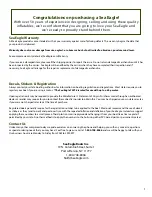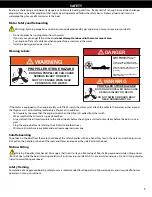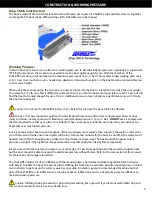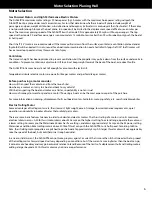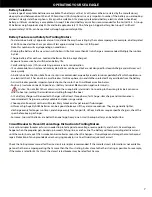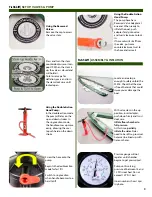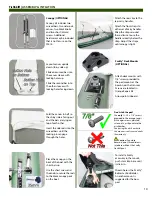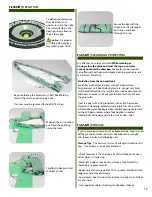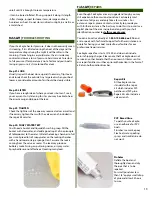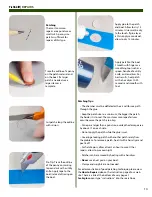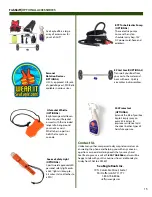
2
SAFETY
In a manual of this type it is impossible to give adequate space to the topic of water safety. For further information on boating
safety, visit USCGBoating.org or enroll in a water safety course given by a local provider.
As a safety reminder, each Sea Eagle has a safety summary we call Boating Safety Basics printed on it. Please follow these
suggestions and use good boating safety practices. In addition to the basics, we suggest you have a reasonable swimming ability
and know that it is safer to go boating with a buddy. If you go alone, tell someone your float plan as described below. When
possible, plan your trip so you go upwind on the way out and downwind on the way back.
Boating Safety Tips
• Always wear a USCG approved PFD (life vest) at all times while on the water.
• Be aware of your local boating rules and regulations and abide by them accordingly.
• Check inflation levels each time before you go out and inflate your boat for a full 24 hours before undertaking long trips.
• DO NOT allow children to use your Sea Eagle unsupervised.
• DO NOT consume alcohol while boating or operating a boat while under the influence of alcohol or drugs.
• DO NOT drag your Sea Eagle over pavement or gravel if it can be avoided.
• DO NOT exceed the certified maximum capacities of this boat under any circumstance.
• DO NOT go boating alone.
• DO NOT use compressors, CO
2
or compressed air for inflation, only use Sea Eagle recommended pumps.
• DO NOT use your Sea Eagle Boat as a personal flotation device as they are not rated for that use.
• DO NOT sleep inside of your Sea Eagle while on the water.
• Bring a fully charged cell phone or other emergency contact device in a waterproof bag.
• Always tell someone of your boating plans.
Safety
Equipment & Important Safety Items
Water conditions will determine the type of safety equipment needed. At a minimum have a PFD (personal flotation device) and a
whistle for each passenger. PDFs are required by law In most places.
Drinking Water & Snacks:
Boating is a physical activity that can deplete your reserves. Have enough water and snacks to prevent
dehydration and loss of stamina. Bring enough water for all passengers. Know the warning signs of dehydration and heat sickness
such as dizziness and shaking.
Extra Clothes/Layers:
Avoid deadly hypothermia. Water conducts heat faster than air, so go prepared with weather proof
clothing especially if the water is cold. Use a “dry bag” to store extra clothing inside so they’re not damp when needed. Wear a
wetsuit or drysuit when warranted.
First Aid-Kit:
Contents of the kit may vary depending on your preferences but be sure to include items that match the hazards
you are likely to encounter. A waterproof container is recommended.
Manual Pump/Repair Kit:
Although our boats are both durable and rugged, it may be possible that you need to make a repair
while on the water in which case you’ll need the repair kit and a manual pump to re-inflate the boat. If this is your first repair, you
may also want to bring this instruction manual with you.
Sun/Rain Protection:
A hat can protect both your face and head from the rain or sun. Sunscreen will help prevent serious
damage to your skin from the sun and the sun’s reflection from the water. Reapply sunscreen as needed.
Whistle:
Having a whistle readily available to you in case of emergency is a great way to attract the attention of others if
assistance is needed.
Float Plan:
Similar to a pilot’s Flight Plan, consider having a Float Plan (www.floatplancentral.org). Always tell someone where
you are going to be boating and what time you plan to return. Keep a cell phone in a waterproof container that will float if it falls
in the water.
Leash:
Use of a leash is recommended for stand up paddling. It is not recommended to use a leash with an electric motor. For use
of the boat with an electric motor, it is best to allow the boat to move away to avoid a propeller strike and retrieve it later.


